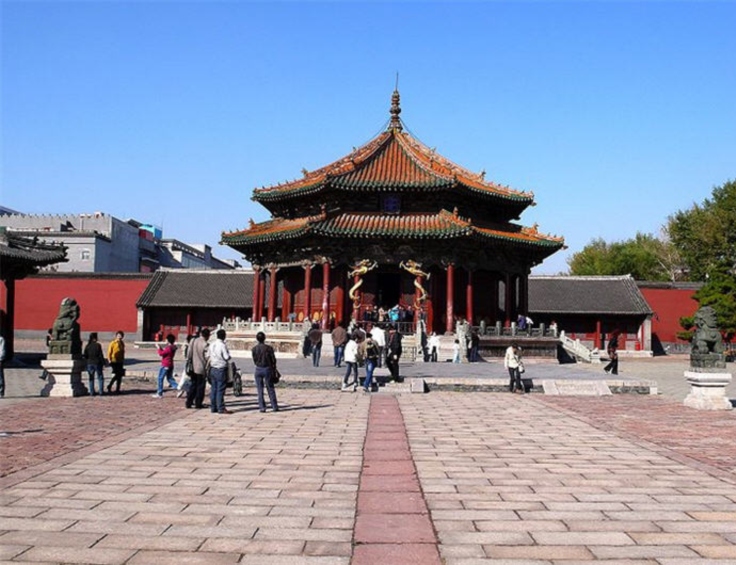Shenyang Imperial Palace is the only existing royal palace in China except the Forbidden City, and it’s a UNESCO World Heritage Site. The main structure of the palace was built in 1625 when Nurhachi was in power. It was finished in 1636 by his son Abahai (Huangtaiji). Nurhachi and Abahai were both founding emperors of the Qing Dynasty.
Covering an area of more than 60,000 square meters, the Shenyang Imperial Palace is one twelfth the size of the Forbidden City in Beijing. The palace consists of more than 300 rooms and around 20 courtyards. The palace can be divided into three sections: the eastern section, the middle section and the western section. Each section boasts of unique characteristics.
The eastern section contains the very impressive Hall of Great Affairs. Emperors throned here, enacted imperial edicts, and welcomed victorious generals and soldiers here. A group of pavilions, known as the Ten Kings Pavilion, stand to its east and west. They formerly served at the place where emperors and leaders from the eight banners settled national affairs. The architectural style of Shenyang Imperial Palace is unique. The style of the buildings, which displays a combination of Han, Manchu and Mongolian cultures, all originated from the shape of a nomadic tent. The eastern section of the palace is representative of the whole palace.

The middle section starts from Da Qing Gate, with Chong Zheng Dian (Jin Luan Dian), the Phoenix Tower and Qingning Palace arranged on a central axis from south to north. Chong Zheng Dian is the place where Abahai held court. It is the most important building in Shenyang Imperial Palace. The Phoenix Tower, a three-storied building, was the highest structure in the whole city at that time. Qingning Palace was the bedchamber for Abahai and his concubines.
The western section of Shenyang Imperial Palace was constructed by order of Emperor Qianlong (1711-1799). Its main structure is the Wen Su Pavilion. In front of this, there are the Opera Stage and Jiayin Hall, and behind it is the Yang Xi Room. The Wen Su Pavilion, which contains the complete Collection of Four Treasures, has a black roof because black was considered to represent water which could be used to extinguish fires to protect the priceless books contained inside.
The palace is not only famous for its ancient imperial architecture, but also renowned for its abundant collections. Shenyang Imperial Palace exhibits a large number of the remaining imperial relics, such as the sword once used by Nurhachi.
Location: No.171, Shenyang Road, Shenhe District
Transportation: Bus 222 or 213 can take you there for ¥1
Ticket: 50 RMB
Opening hours: 8:00 - 17:00
